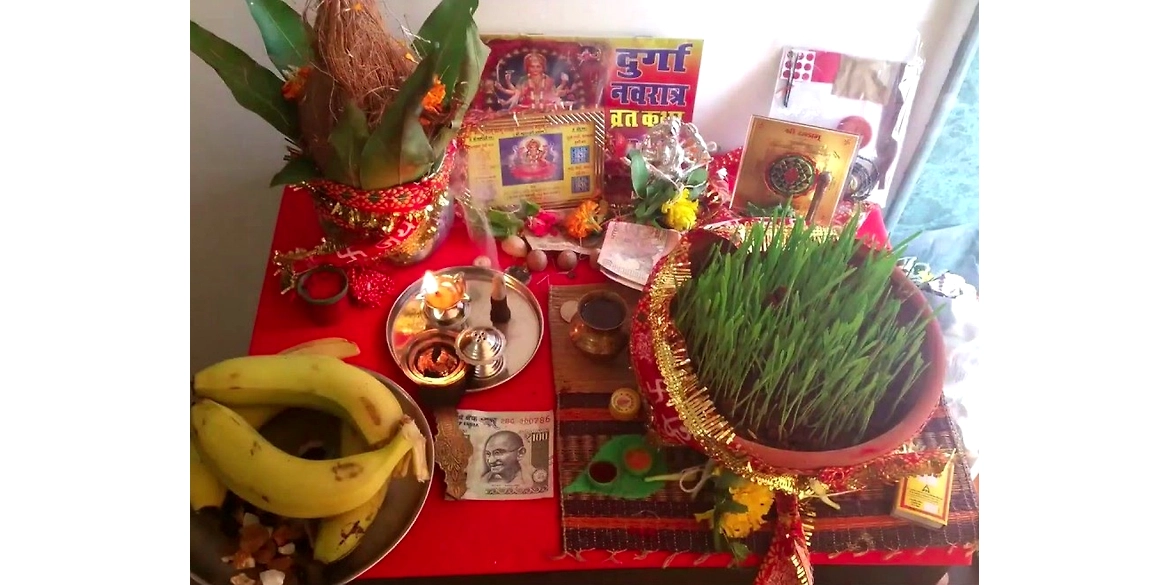- Home
- Company Profile
-
Our Products
- VELVET PUJA ASAN
- DHOTI, CHUNRI
-
PUJA SERVICES
- Navratri Navdurga Mata Puja and Homams
- Dasa Mahavidya Puja and Yagna
- Rituals / Pujas for Sacred Cows
- Navgraha (Nine Planets) Puja
- Sanskara
- Dosh Nivaran Pujas
- Yagnas & Homams
- Mantra Siddhi Japa
- Daan Dakshina (Donation)
- Divine Touch Cream
- Pujas for Departed Ancestors and Peace of Soul
- Katha, Vrat (Fast) Stories
- RUDRAKSHA
- GEMSTONES
- God Shringar Poshak, Crown & Dress
- AGARBATTI / DHOOPS
-
PUJA ITEMS
- Essential Oils
- Attar
- Rangoli
- Natural Floral water
- Diyas
- Puja Kits
- Puja Essentials
- Divine Touch Cream
- Sacred Threads
- Cotton Wicks
- Puja Thalis
- Prayer Vessels
- Puja Coins and Frames
- Deity Garlands
- Dhoop / Camphor
- Havan Items
- Shagun Envelopes
- Rare Items
- Rakhi Thread
- Navgraha Shanti Packs
- Kumkum, Sindoor, Sandal Tilaks & Paste
- DEITY IDOLS
- VELVET PUJA AASAN
- Contact Us
VedicVaani.com is a one-stop solution for your puja related religious items. Our product range includes havan items, deity idols, rudraksha, yantras, gemstones, items for offerings deities, pooja utensils, puja clothes, incense, dhotis and chunris. W...
- (+91) 9820697944
- vedicvaani@gmail.com
- Room no. 8, Om Sainath Vijaynagar Bldg, RHB Road, Mulund West, Mumbai, Maharashtra, India. 400080
© 2020 Vedic Vaani. All Rights Reserved

Durga is depicted in the Hindu pantheon as a goddess riding a lion or tiger, with many arms each carrying a weapon,often defeating Mahishasura (lit. buffalo demon).She appears in Indian texts as the wife of god Shiva, as another form of Parvati or mother goddess.
The ten-day-long Durga Puja is a major annual festival in Bengal, Odisha, Assam, Jharkhand and Bihar. It is scheduled per the Hindu luni-solar calendar in the month of Ashvin, and typically falls in September or October. The festival is celebrated by communities by making special colorful images of Durga out of clay,recitations of Devi Mahatmya text,prayers and revelry for nine days, after which it is taken out in procession with singing and dancing, then immersed in water.
The day of Durga's victory is celebrated as Vijayadashami (Bijoya in Bengali), Dashain (Nepali) or Dussehra (in Hindi) – these words literally mean "the victory on the Tenth (day)".
It is believed that after the heartfelt three-day worship of Goddess in the Durga form, a person attains victory over his/her inner vices, like ego, anger, lust, fear etc. and only then he/she can move forward to attain spiritual wealth. Thus, Goddess Lakshmi, who is believed to be the bestower of spiritual, materialistic wellbeing and prosperity, is worshipped from the fourth to the sixth day of Navratri. However, on the fifth day, the Mother Goddess is worshipped in the form of Saraswati, the deity of knowledge and wisdom as per the Hindu religion.
WORSHIP OF KANYAS/GIRLS
The final day of Navratri festival is known as 'Mahanavami'. This day is considered very auspicious as per the Hindu religion. On this day, nine girls, who still have to reach adolescence, are worshipped with great devotion. These nine girls represent the nine incarnations of the divine Mother Goddess. The girls are welcomed into the home by washing their feet and are offered prasad and new set of clothes at the end of the puja by the devotees. Thus, Goddess Shakti represents the cosmic power of God, which does the work of creation, preservation as well as destruction. The worship of Goddess Shakti re-confirms the scientific theory that energy is imperishable. It cannot be created or destroyed, it is always there.

